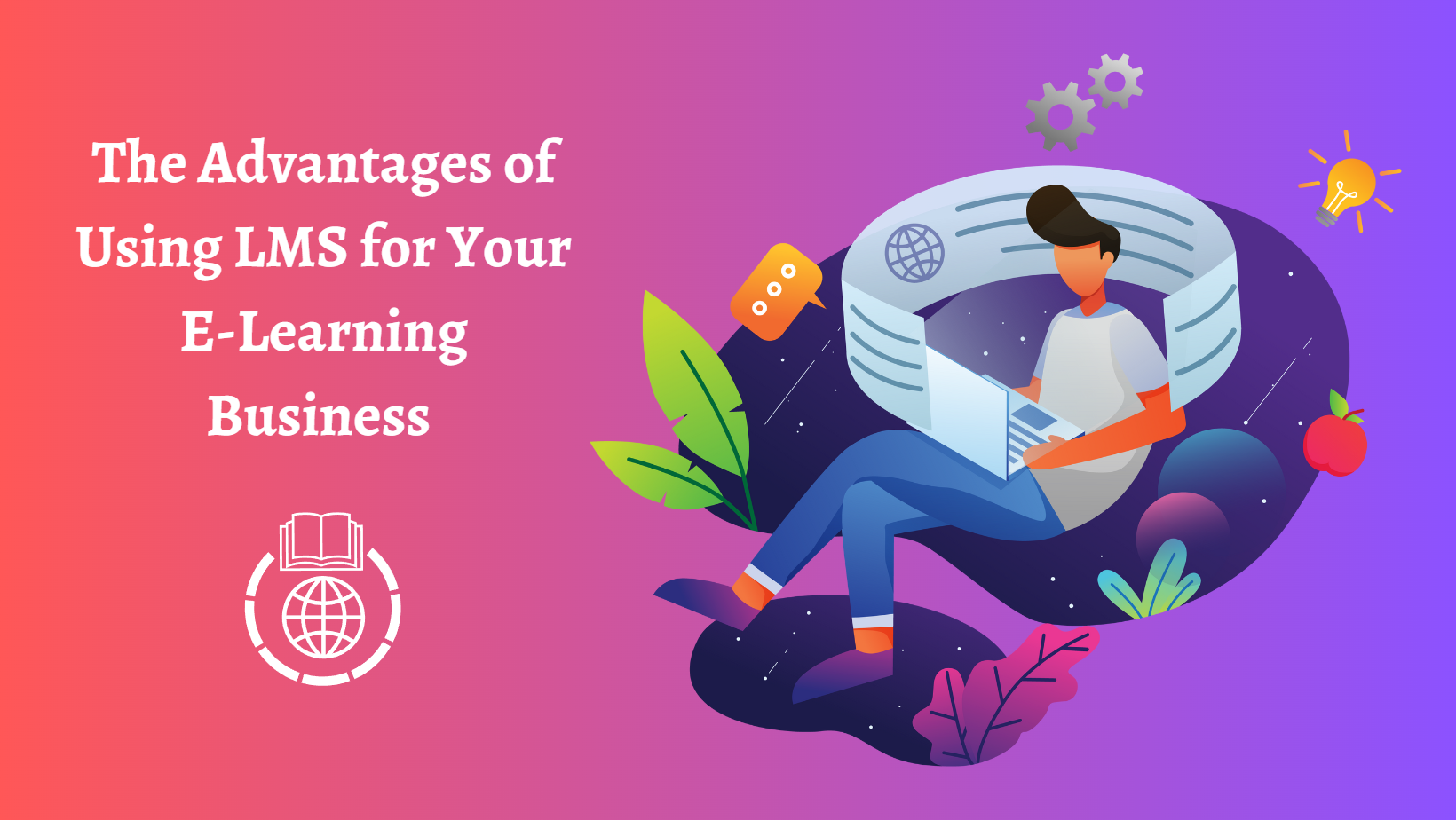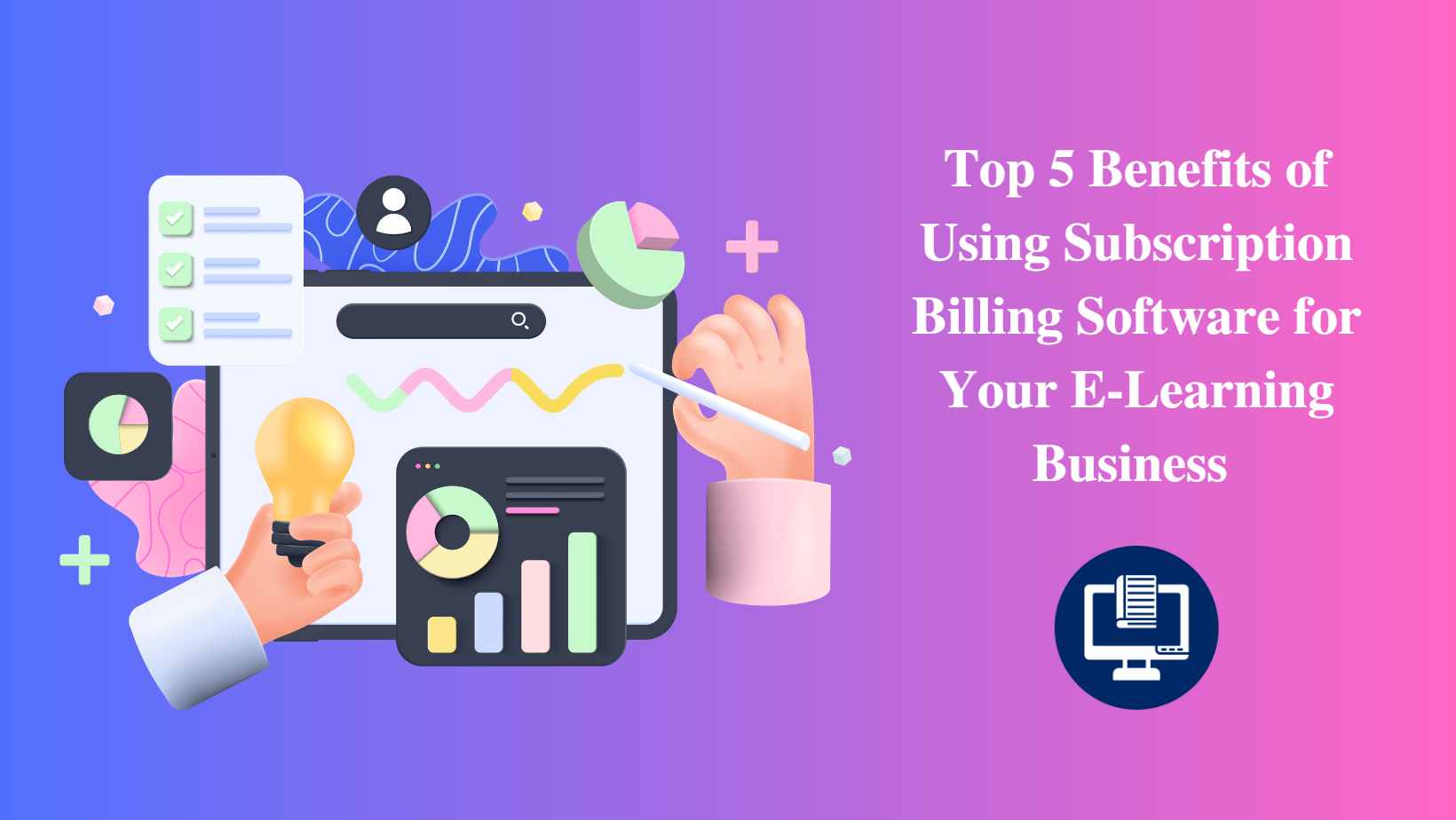The Advantages of Using LMS for Your E-Learning Business

Did you know?
Since its inception, the online learning market fact suggests that by 2025 to hit the $325 billion mark in over two decades.
E-Learning platforms are moving forwards towards the curve despite their challenges. If you're running an e-learning business, you know how important it is to provide high-quality training programs to your clients.
But managing and delivering those programs can be a challenge. That's where a Learning Management System (LMS) comes in. In this article, we'll explore the benefits of using an LMS for your e-learning business and how it can help you streamline your operations and improve your training programs.
What is LMS in E-Learning?
LMS stands for Learning Management System, which is a software application used to manage and deliver online training courses. It provides a centralized platform for creating, delivering, and tracking e-learning content. LMS allows instructors to create and manage courses, track student progress, and assess performance. It also provides learners with access to course materials, assessments, and feedback. LMS is an essential tool for organizations that want to provide effective and efficient online training.
Benefits of LMS in E-Learning:
There are multiple benefits of LMS in E-Learning business
- Centralized Management of Learning Content.
- Customizable Learning Paths for Different Learners.
- Automated Tracking and Reporting of Learner Progress.
- Integration with Other Business Systems.
- Scalability and Cost-Effectiveness.
Centralized Management of Learning Content.
Utilizing an LMS for your e-learning company has several benefits, one of which is the ability to centralize the hosting and management of your course materials. Using a single platform, an LMS makes it simple to create, arrange, and deliver your training resources. This facilitates tracking student progress and performance as well as updating and maintaining your content.
A variety of content, including documents, presentations, videos, and interactive modules, can be uploaded and organised by educators. This centralized content repository makes it easy for learners to access the materials they need, promoting consistency and eliminating the need for physical resources. Plus, you won't need to worry about controlling several platforms or systems as your business expands because you can quickly scale your training programs.
Customizable Learning Paths for Different Learners.
Personalization for each individual yields better results.
Another advantage of using an LMS for your e-learning business is the ability to create customizable learning paths for different learners. With an LMS, you can create personalized learning paths based on each learner’s needs, interests, and skill level. Students can access course materials and engage in activities at their own pace and convenience.
This not only improves the learning experience for each individual learner but also helps to increase engagement and retention rates. Additionally, you can monitor each learner’s progress and adjust their learning trail as needed to ensure they are getting the most out of your training programs. This customization helps learners receive tailored instruction and support, leading to a more effective learning experience.
Automated Tracking and Reporting of Learner Progress.
Automation makes every essential but humdrum task easy and interesting.
Automated tracking and reporting of learner progress comes as a bonanza with LMS. LMS platforms often offer interactive features, such as quizzes, discussions, and multimedia elements, to enhance learner engagement. With an LMS, you can easily track each learner’s progress through the course, including how much time they spend on each module, their quiz scores, and any other relevant data.
These hands-on activities encourage active learning, provide instant feedback, and develop a collaborative learning atmosphere, which helps students understand the subject matter better. This not only saves you time and effort but also provides valuable insights into how your learners are engaging with your content. You can use this data to make informed decisions about how to improve your training programs and better meet the needs of your learners.
Integration with Other Business Systems.
Communication is the key.
LMS platforms typically include communication tools, such as discussion forums, messaging systems, and video conferencing, facilitating interaction and collaboration among learners and educators. This means that you can easily connect your LMS with your HR system, CRM, or other business tools to streamline your operations and improve efficiency. Through these channels of communication, students can interact with other pupils, raise questions, obtain clarification, and work together on projects, strengthening their feeling of community and developing social learning.
For example, you can use your LMS to automatically assign training courses to new employees as part of their onboarding process or to track the progress of sales reps as they complete product training. By integrating your LMS with other business systems, you can create a seamless workflow that saves time and reduces errors.
Scalability and Cost-Effectiveness.
LMS platforms enable educational institutions and organizations to scale their e-learning initiatives efficiently. With an LMS, you can easily add new courses, users, and content as your business grows. Without incurring considerable infrastructure costs, they can accommodate several students in different environments. As a result, you may increase the scope of your training measures without being concerned about the constraints of conventional classroom-based training.
Note: Integrating your business with a global subscription platform would prove healthy for your business as it will help you in scaling your business as well as it is cost-efficient.
Additionally, using an LMS can be cost-effective in the long run. While there may be upfront costs associated with implementing an LMS, it can save you money in the long run by reducing the need for physical classroom space, travel expenses, and printed materials. Digital content may also be quickly updated or reused, which eliminates the need for the printing and distribution costs associated with traditional instructional materials.
About us:
MYFUNDBOX is a subscription billing platform that helps businesses handle recurring billing and revenue management operations integrated with payment processing decacorns like Stripe, GoCardless, and Mollie.
MYFUNDBOX provides a single platform to enable customer-preferred payments globally and also is in partnership with Google Cloud.
It was started to help companies focus on their growth while we make sure they get paid securely and on time. We offer customizable recurring flexible billing cycles, automated invoices and colourful dashboards to understand the behaviour of your students. We strive to meet our customers' demands and be ever ready to offer them services worth their money.
MYFUNDBOX is a full package required to stand up to the needs and demands of the customers.
Book a free trial here!
Check out our customer's review here.


